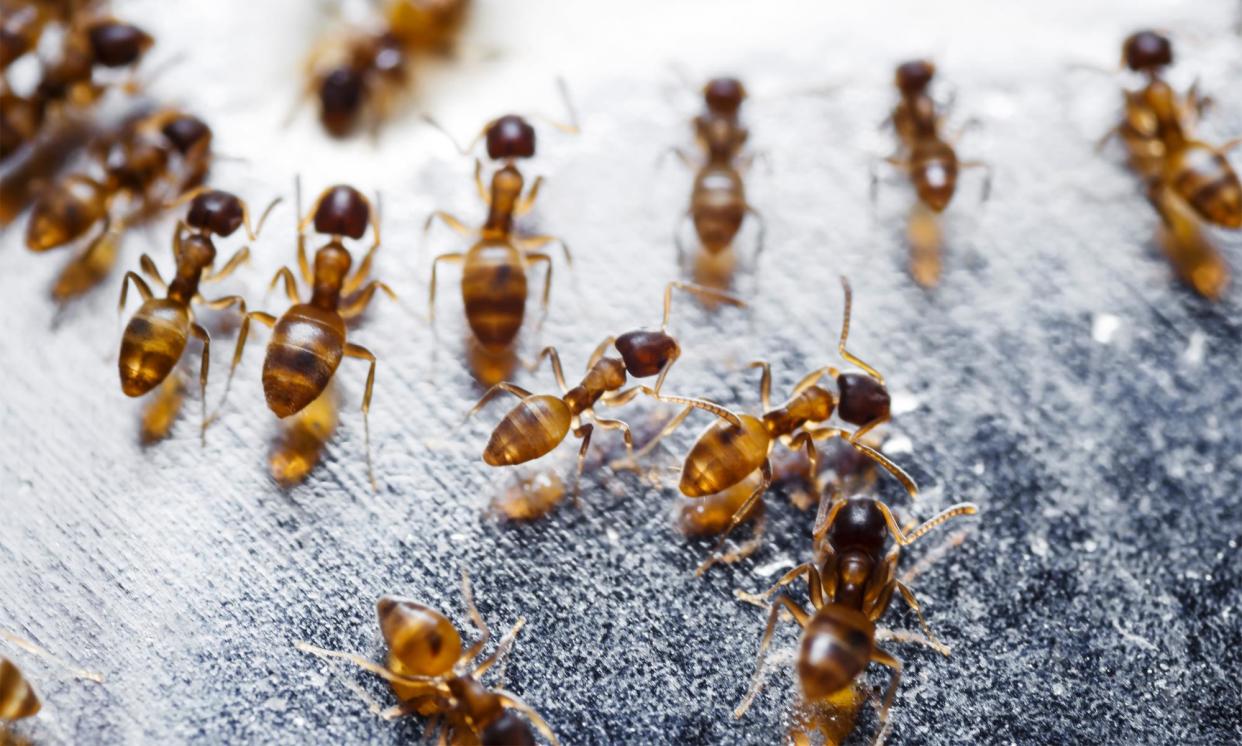Scientific body given just $100,000 a year to fight deadly fire ants, Senate inquiry told

Australia’s leading scientific research body received just $100,000 a year towards combatting fire ants, a Senate inquiry into the highly invasive pests has heard.
At the third and final session of public hearings for the Senate inquiry on Monday, the committee’s chair, Senator Matt Canavan, said some of the evidence he had heard had “freaked [him] out”.
Red imported fire ants (Rifa) are believed to have entered Australia in the 1990s and were discovered at Brisbane port in 2001. A program spanning state, territory and federal governments was created to eradicate Rifa and has been allocated more than $1.2bn of federal and state funding. Of that, $593m covers 2023 to 2027.
But the CSIRO’s executive director of future industries, Kirsten Rose, said the agency has only received about $1m – most of it government funded – towards combatting fire ants over the last 10 years, despite pioneering research in Rifa management including the development of a Rifa-specific novel genetic bait and drone surveillance technology.
Canavan, the chair of the Senate rural and regional affairs and transport references committee, said that $100,000 a year “doesn’t sound like a lot”.
Funds were more likely to be diverted to urgent eradication operations and other research bodies were also researching fire ants, the committee heard.
Rose was one of many witnesses who called for more funding towards eliminating the extremely damaging pest, which has now spread to more than 700,000 hectares in south-east Queensland amid a spate of recent detections in northern New South Wales.
Angus Atkinson, the chair of the National Farmers’ Federation’s sustainable development and climate change committee, said he was “very concerned” about resourcing of the program and that farmers “would be really happy” to be part of its governance.
“We only manage 50% of the continent,” he said, referencing the amount of Australian land dedicated to farms and agriculture. “You’ve got to involve us.”
Over three days of hearings, the committee heard scores of testimonies underlining the immense scope of the problem.
95% of Australia’s landmass is suited to fire ants, according to the Invasive Species Council. Should the ants spread through Australia’s habitat, the impact would be worse than the combined effects of rabbits, cane toads, foxes, camels, wild dogs and feral cats.
Up to 650,000 Australians could be stung each year and the beef industry could be slashed by 40%.
“It freaked me out, some of the briefings I’ve had about the potential ramifications [of fire ants],” Canavan said on Monday.
Meanwhile, environmental experts have pushed back against claims made to the committee that chemicals used to kill fire ants may impact native fauna.
Jack Gough of the Invasive Species Council said that concerns over the health and environmental impacts of the pesticide fipronil in the fight against fire ants did not reflect the highly targeted and low levels at which the chemical is used by the eradication program.
“This is being done in a targeted fashion at very low doses in ways that aren’t comparable to the broad scale use of fipronil on crops. They are just such wildly different scales of use,” he said.
“Fipronil at high doses used indiscriminately clearly has high environmental impacts, particularly on insect populations.
“There’s absolutely no way the way it is being used [on fire ants] is going to have an impact on native animals, other than some highly localised impacts on native ants species that will quickly recolonise once fire ants have been removed from the area,” he said.
He said the council had visited cane farms in Queensland where fire ants nests that had been injected with fipronil were now home to native ants.
“The reality is that fire ants are a disaster for our native wildlife and their impacts far outweigh the very small localised impacts of this chemical,” he said.


